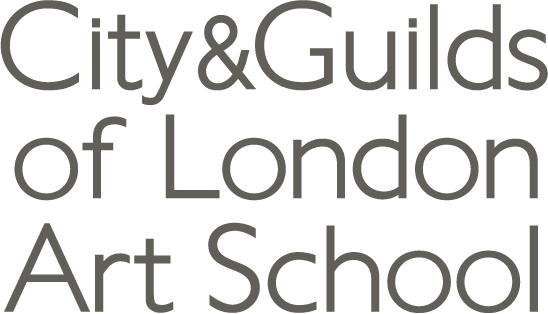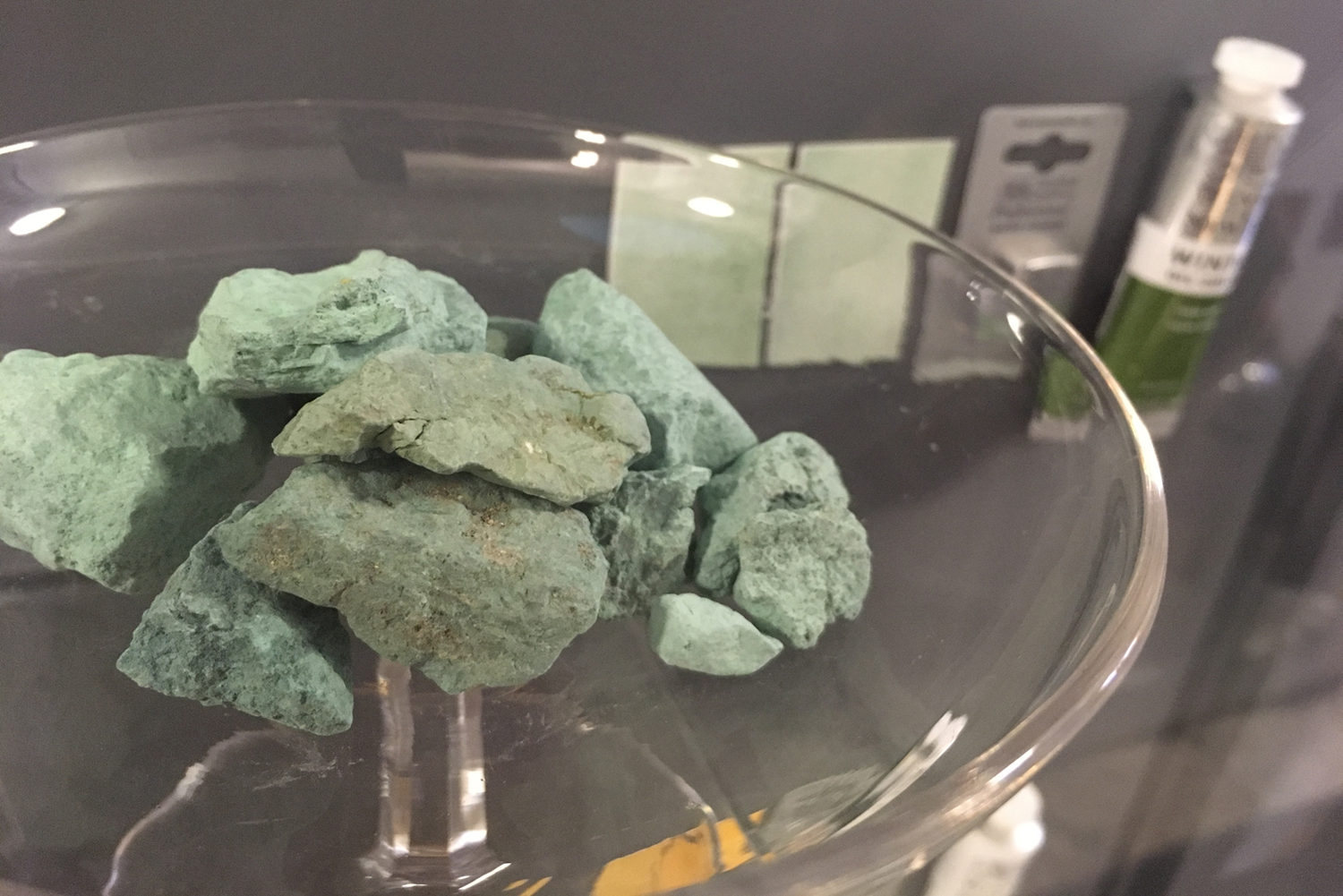The Materials Foyer is a carefully-curated reference library in the heart of the Art School where students can learn more about what materials mean to conservators, carvers and artists. Its purpose is to draw attention to materials, create dialogue and acknowledge the breadth of processes used across our Historic Carving, Conservation and Fine Art departments. The Materials Foyer is curated to reflect the current Materials Matters focus; for 2018/19, this is Pigment.

Sketchbook pages, Keith Price 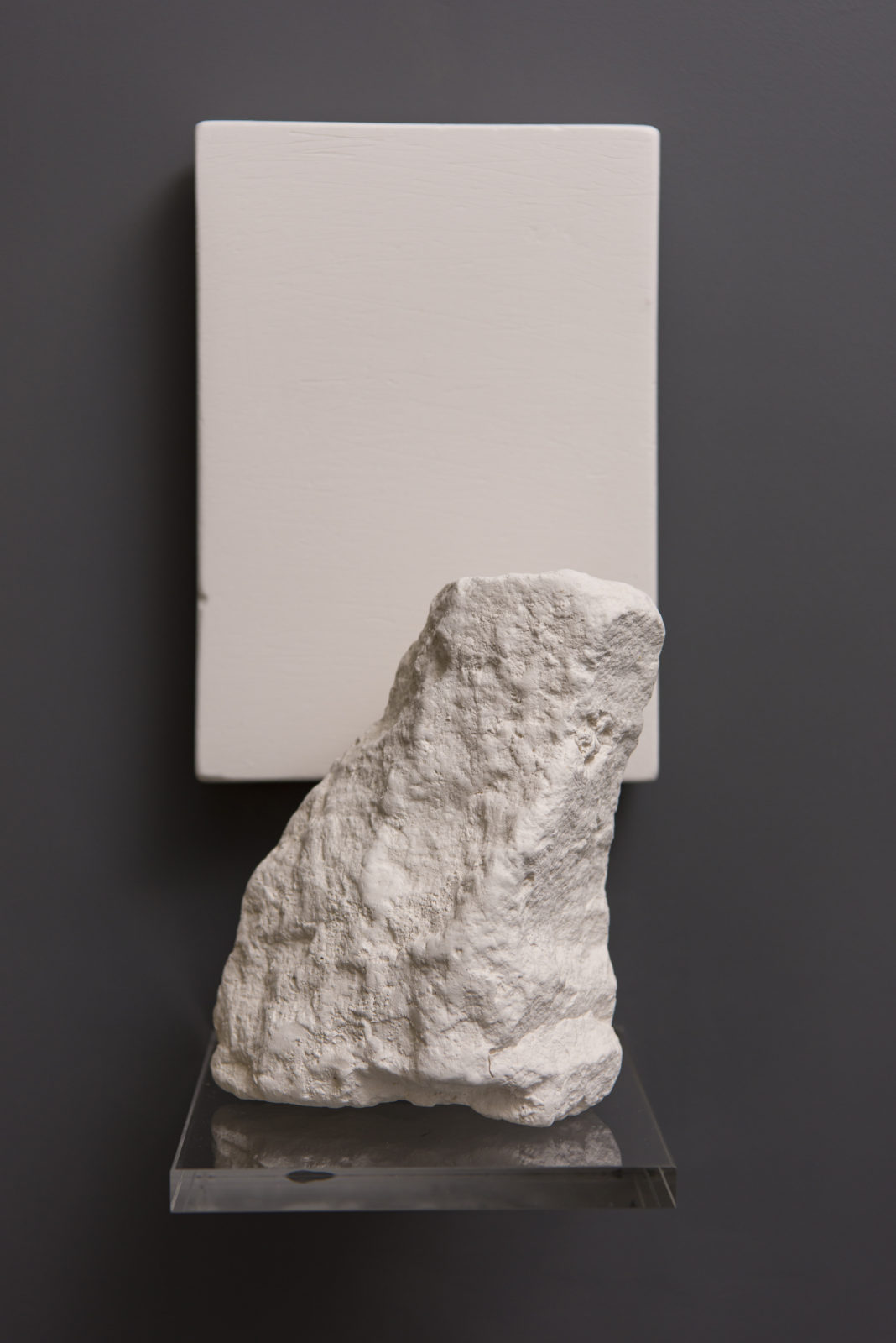
Exposed, Onya McCausland 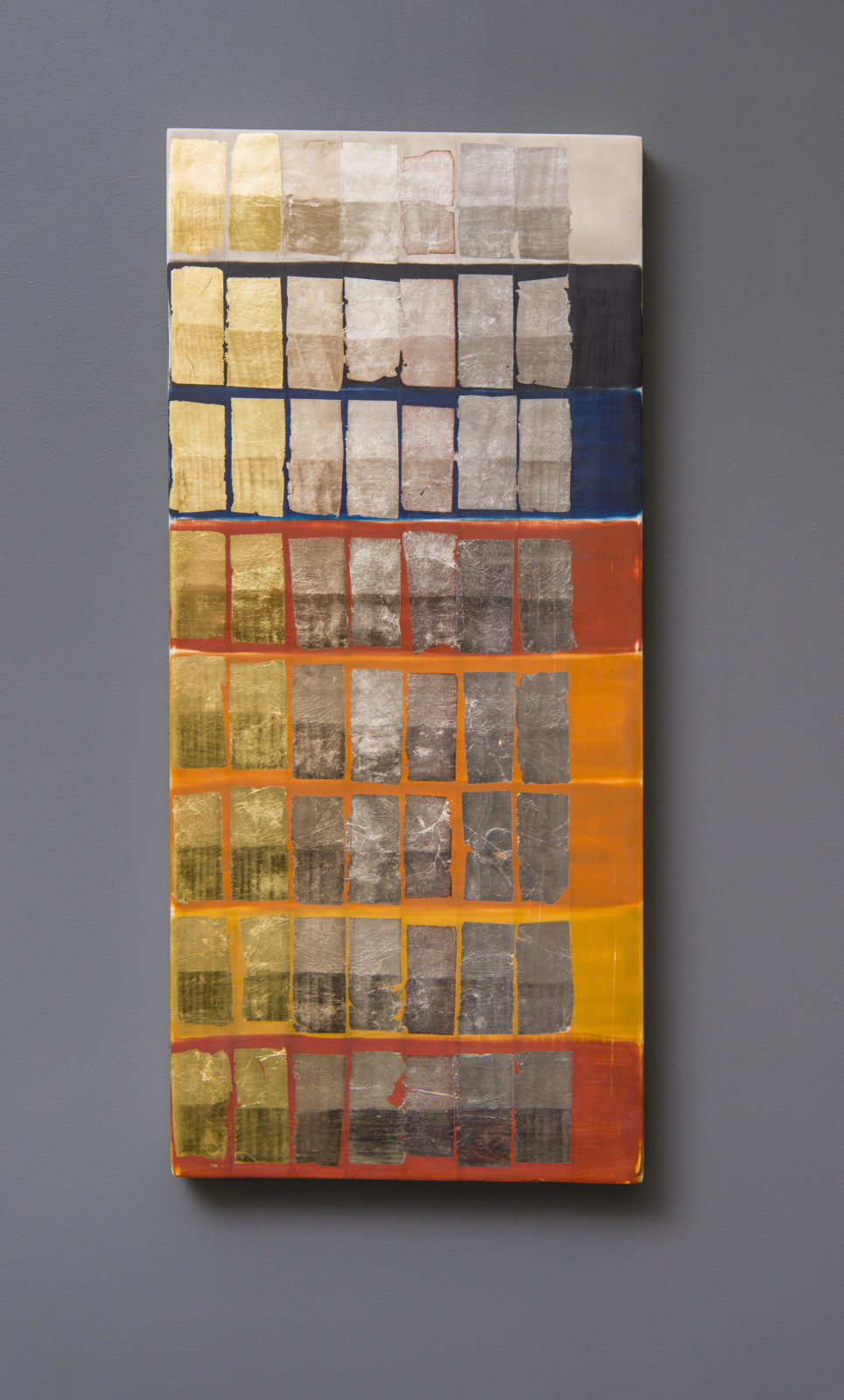
Gilding sample board, Silje Loa Thrysøe Jørgensen 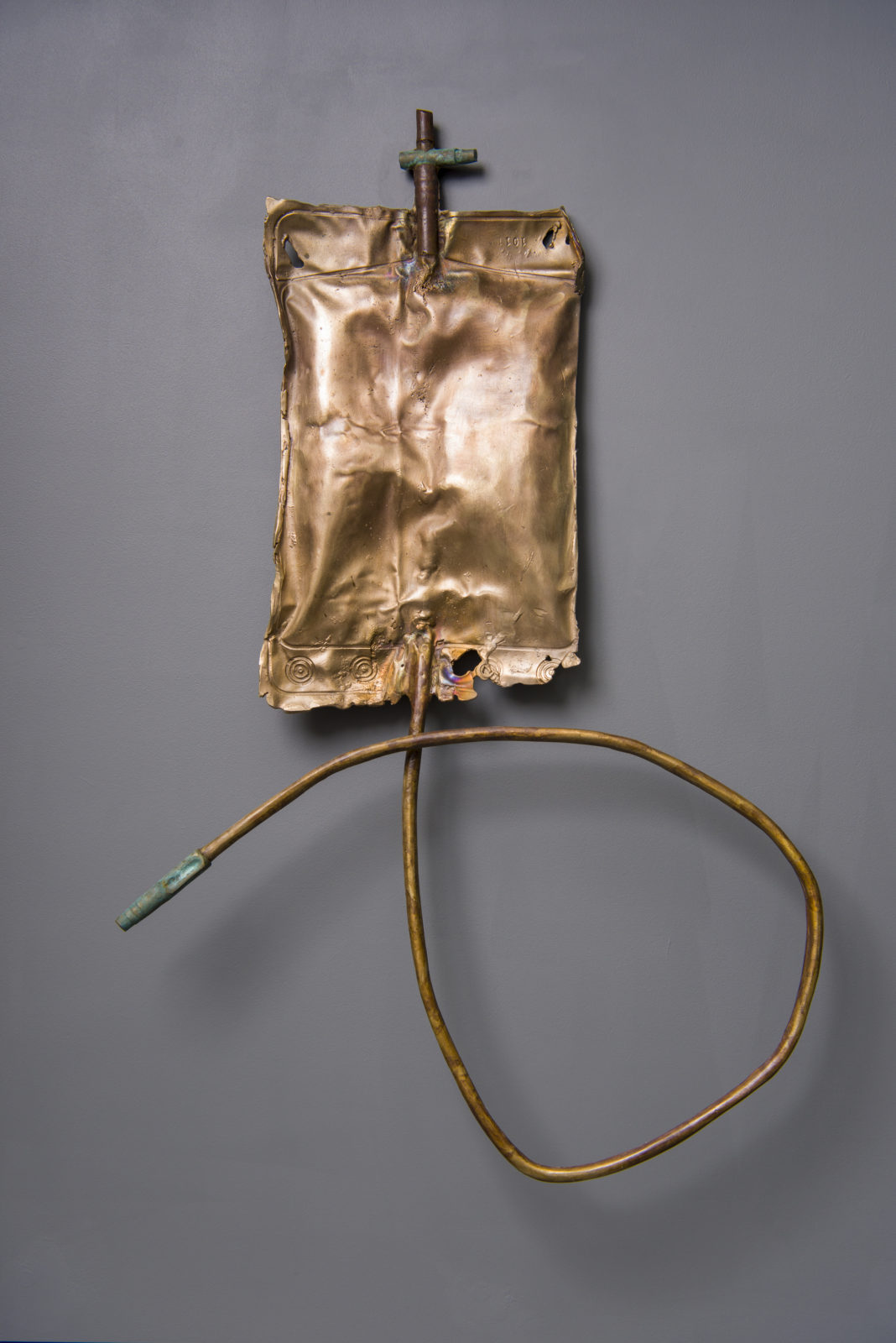
Little fighter, Sarm Derbois 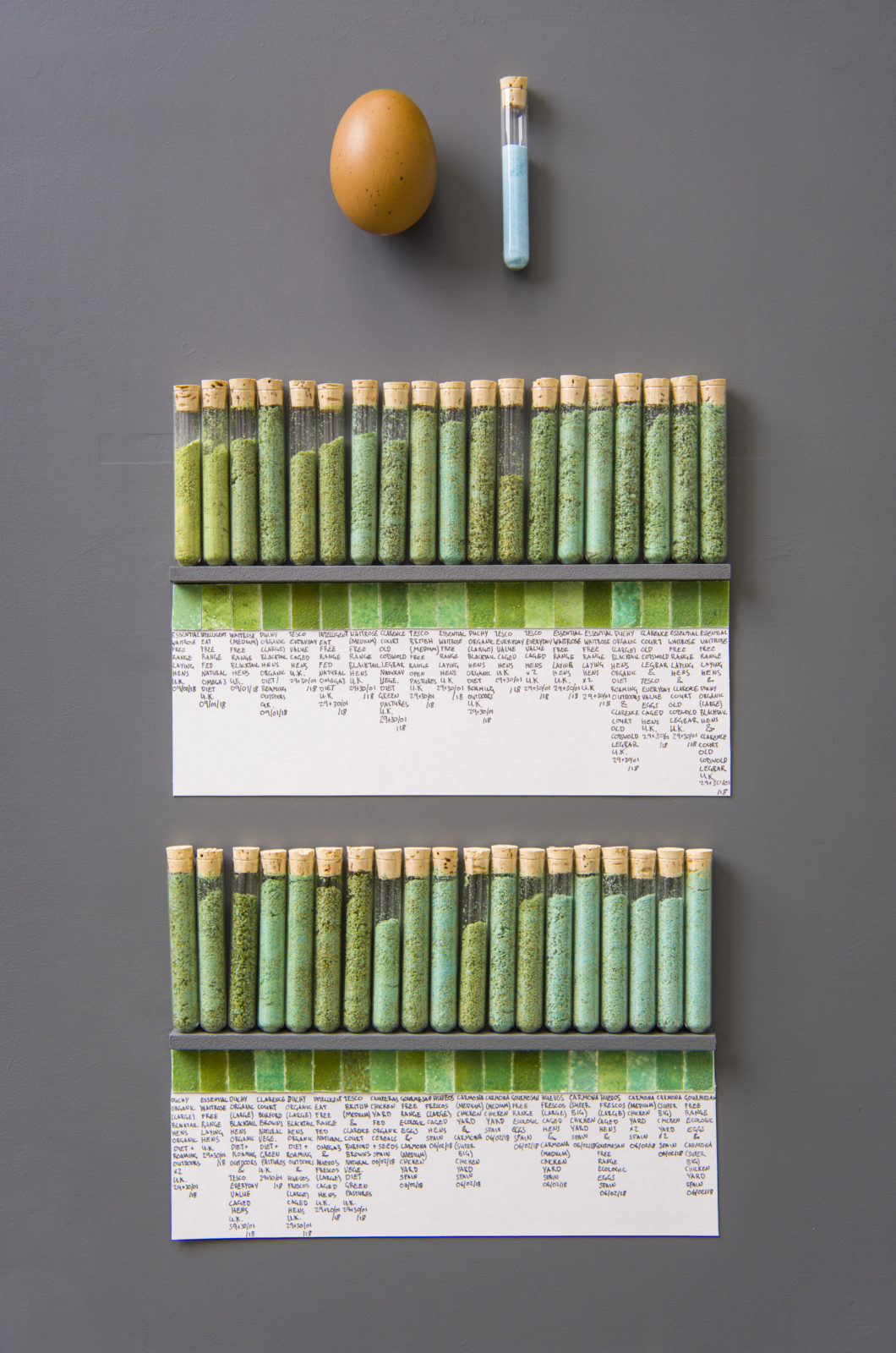
Research into colour variation of copper sulphate for egg tempera, Catalina Christensen 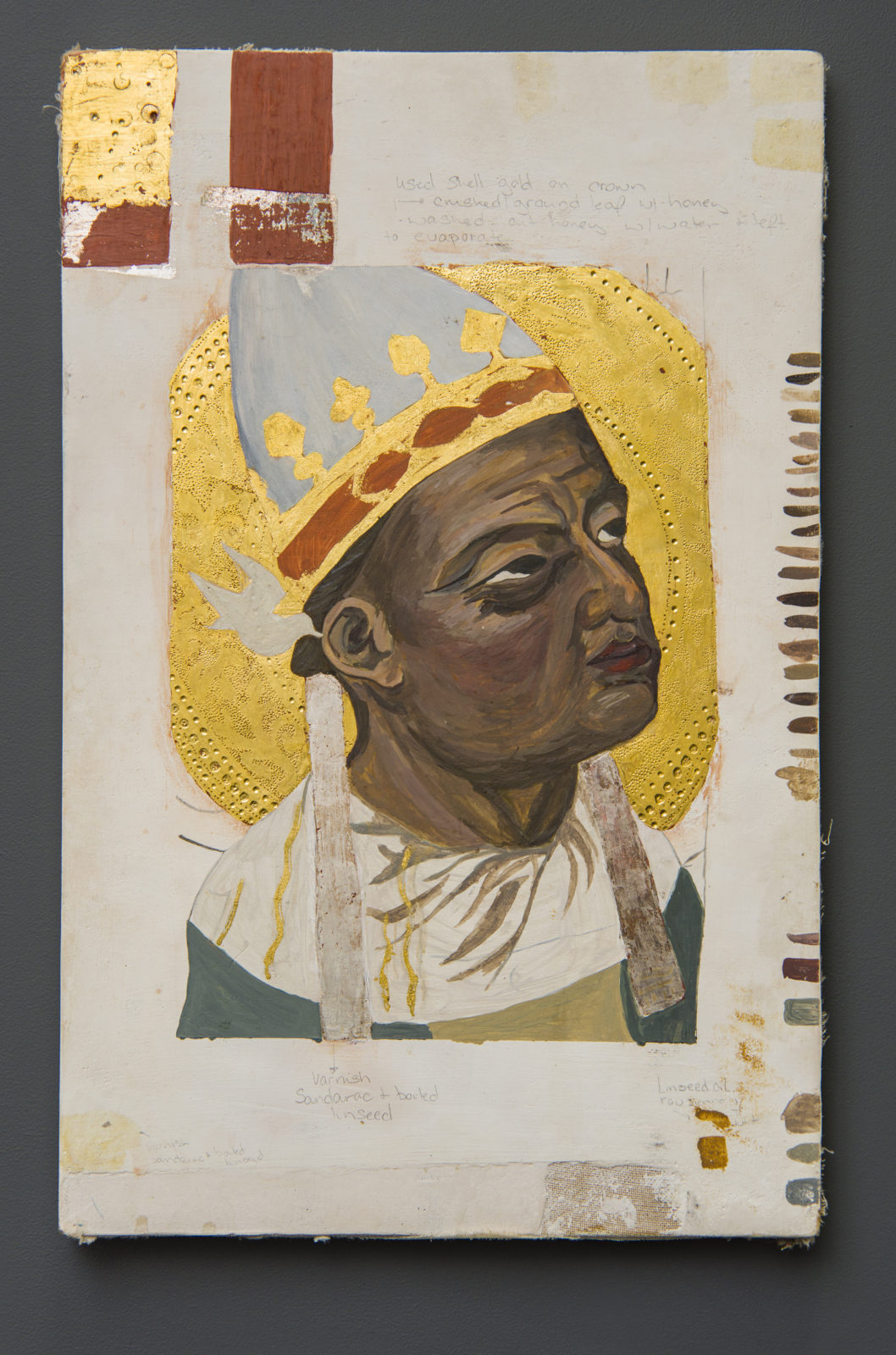
Jiacopo di Cione’s San Pier Maggiore Altarpiece (Saint Gregory), Meredith Thomas 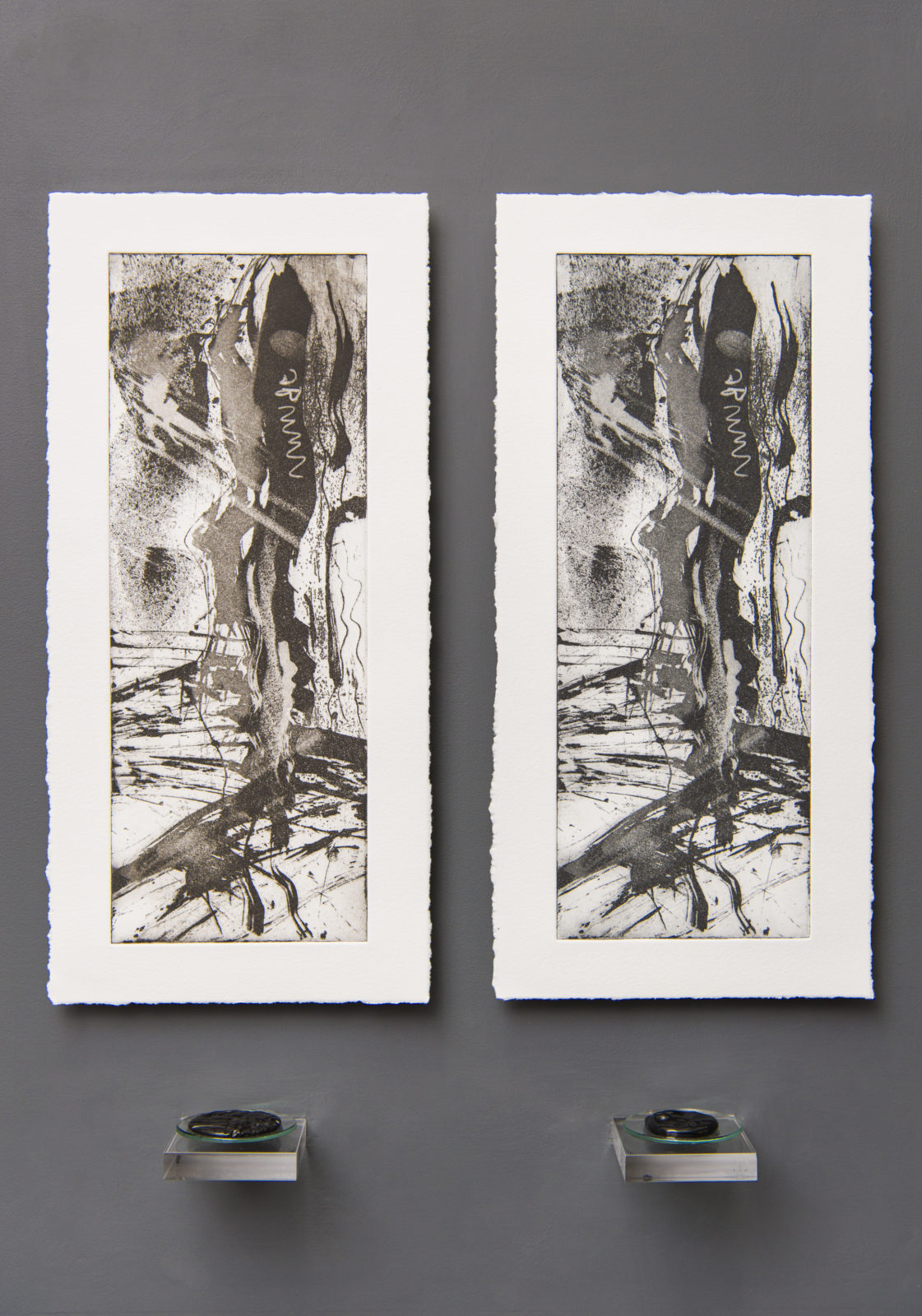
Sugarlift aquatint etched on zinc plate 
Synthetic pigments, Winsor & Newton 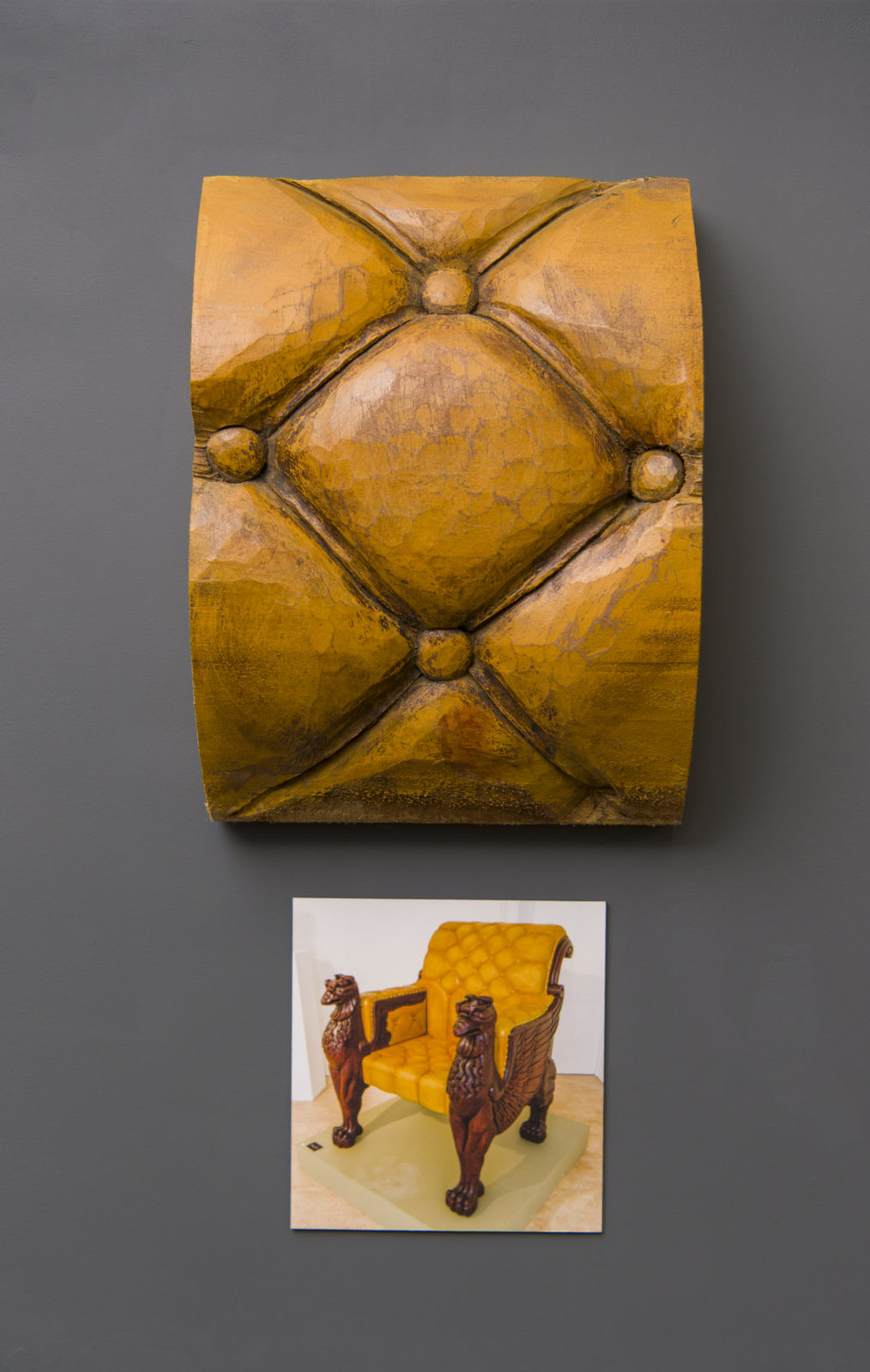
Carved upholstery sample, Kristy Flood 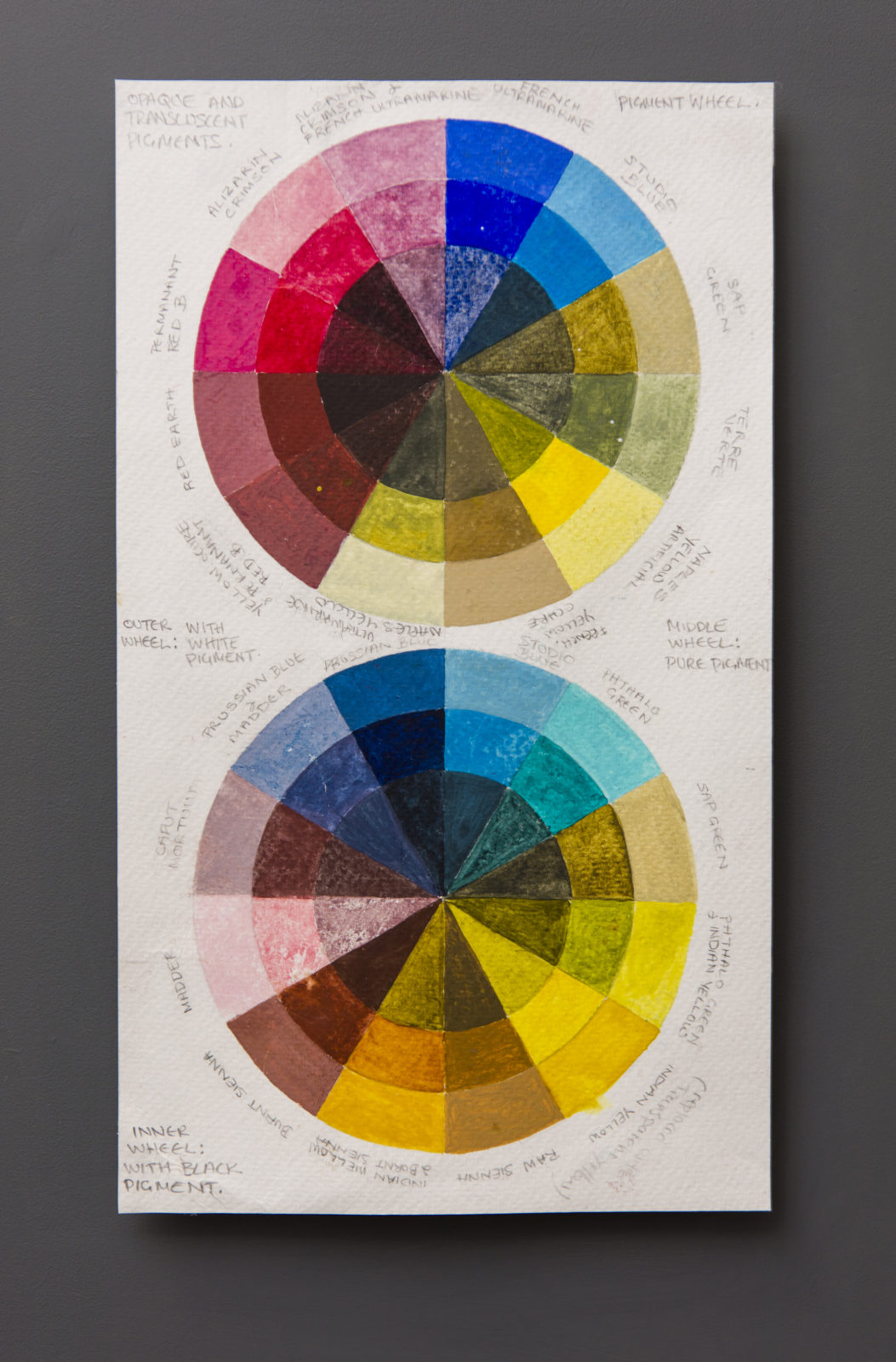
Colour wheel of translucent and opaque pigments, Melaney Gibson 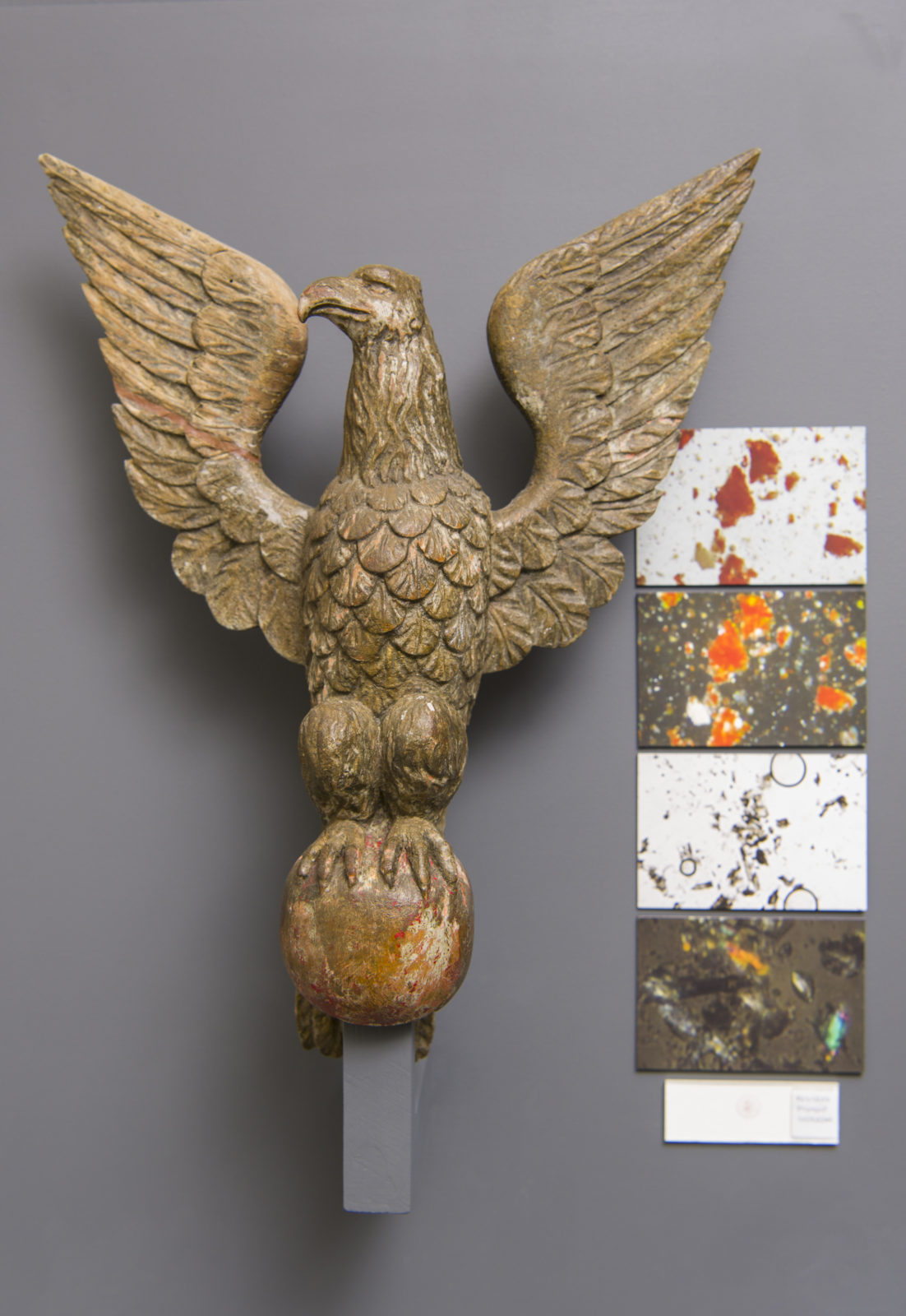
Carved eagle, 1800-1850 
Terre Verte (natural earth pigment and Historic Indian yellow 
Carved acanthus leaf, Silje Loa Thrysøe Jørgensen 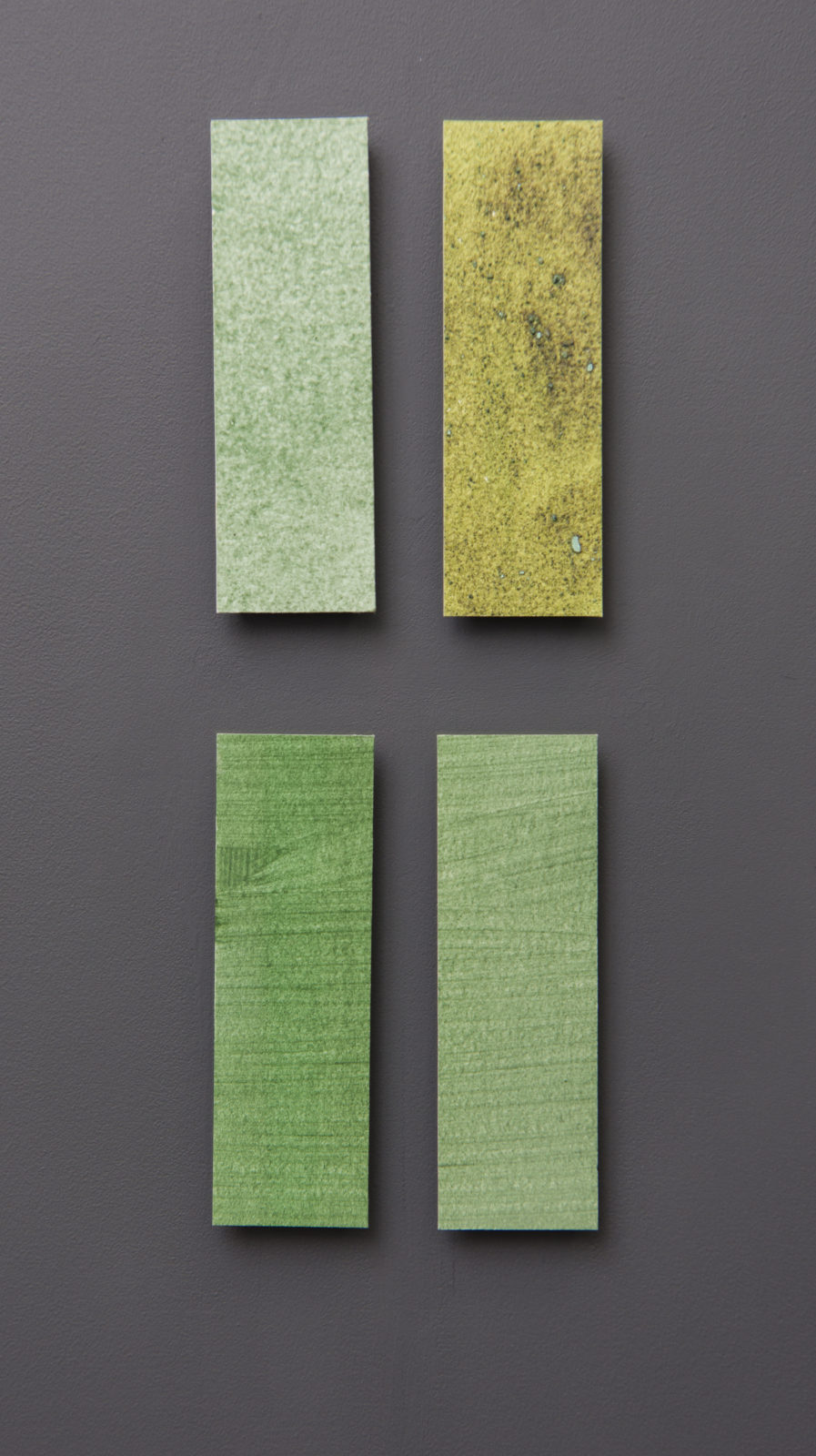
Samples exposed to 150 years of light at average gallery conditions 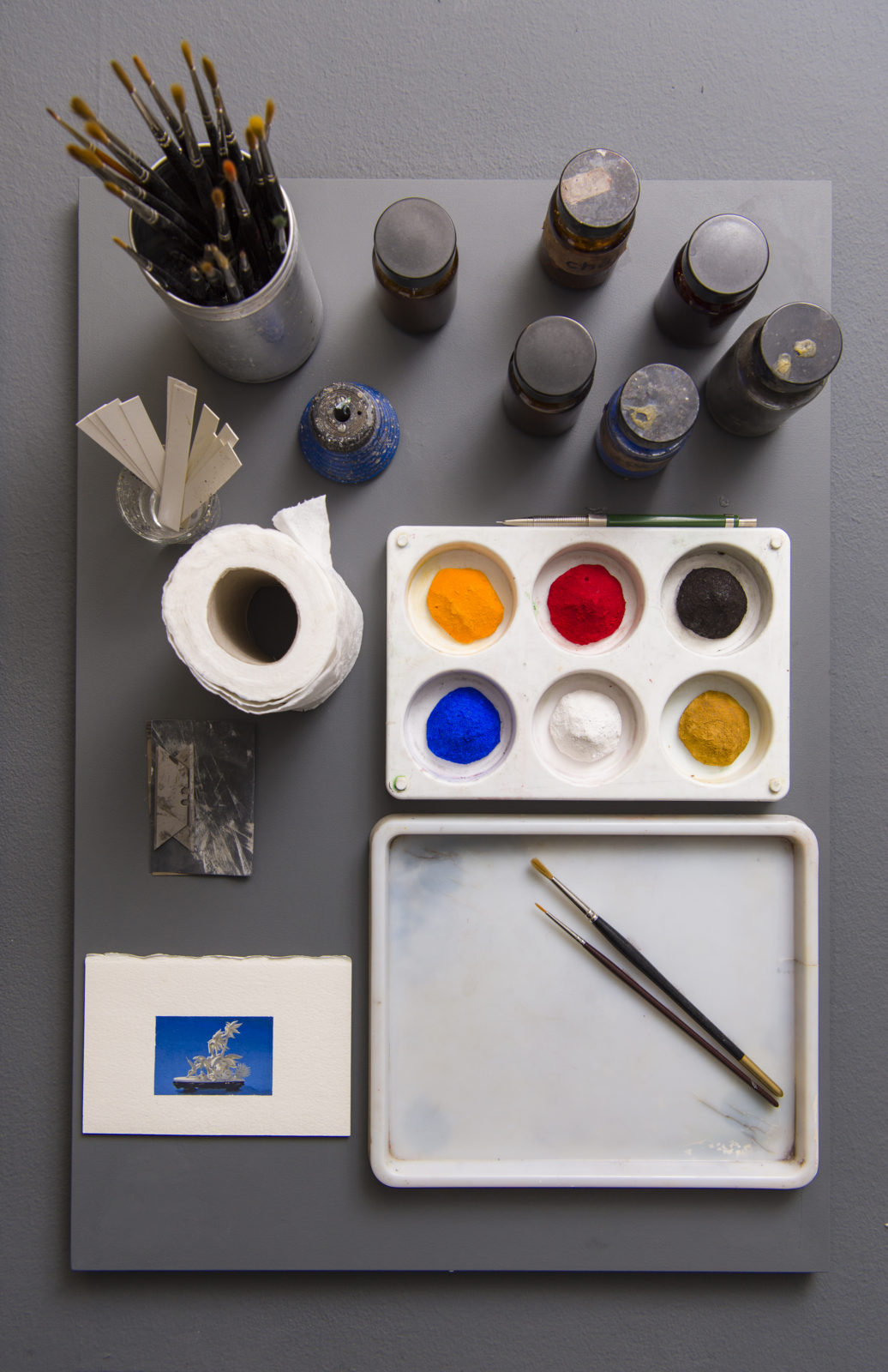
Studio composition for egg tempera painting, Andrew Grassie
As essential key material for artists, designers, craft specialists, conservators and restorers, pigments have been used through millennia to image and ornate, from the most domestic object to the most ritually significant. With thousands of known pigments available across the world, their historic impact is profound and enduring.
Sketchbook pages
Visual complements derived from after-images mapped against pigment mixtures that produce neutrals
Artists’ quality oil paints on primed paperKeith Price, Head of Foundation Diploma in Art & Design
Exposed
Chalk from Steeple Morton, HertfordshireOnya McCausland, Visiting lecturer, Fine Art
Gilding sample board
Gold and silver leaf on varying bole colour groundsSilje Loa Thrysøe Jørgensen, Diploma Ornamental Woodcarving & Gilding student
Little fighter
Bronze with ferric nitrate and copper nitrateSarm Derbois, MA Fine Art graduate
Research into colour variation of copper sulphate for egg tempera
dependent upon the feed and breed of hensCatalina Christensen, BA Fine Art graduate
Jiacopo di Cione’s San Pier Maggiore Altarpiece (Saint Gregory)
Gesso grosso, gesso sottile, shell gold, gold and silver gilding, punchwork and egg tempera on panelMeredith Thomas, BA Conservation Studies student
Sugarlift aquatint etched on zinc plate
Left, black printing ink with 25% Prussian blue
Right, black printing with 50% raw umber
Synthetic pigments
Cadmium red, terre verte, ultramarine blue, and yellow ochre with linseed oil, gum arabic and acrylic medium on paperWinsor & Newton
Carved upholstery sample
Paint layers, tinted oils, beeswax and pigment on tulip woodKristy Flood, Diploma Ornamental Woodcarving & Gilding graduate
Colour wheel of translucent and opaque pigments
Melaney Gibson, BA Conservation Studies student
Carved eagle, 1800-1850
Pigment dispersion of red lead ground layer on left wing, below laminated joint
Sample on glass slide
Polarised light microscopy x400
Cross-polar light microscopy x400
Under polarised light x100
Under cross-polar light x400
Terre Verte (natural earth pigment)
Samples on paper – natural earth and synthetic pigment
Contemporary Terre Verte products
Historic Indian Yellow
Samples on paper – historic and synthetic pigment
Contemporary Indian Yellow productsWinsor & Newton Archive
Carved acanthus leaf
Gesso, bole, gilding, burnishing, toning and distressing on lime woodSilje Loa Thrysøe Jørgensen , Diploma Ornamental Woodcarving & Gilding student
Samples exposed to 150 years of light at average gallery conditions
Above and below show natural earth and contemporary synthetic Terre Verte
Left to right show before and after testWinsor & Newton Laboratory & Archives
Studio composition for egg tempera painting
Pigment and artists’ materials for painting Object 1Andrew Grassie, Lecturer, Fine Art
The Materials Foyer is kindly supported by Winsor & Newton.
